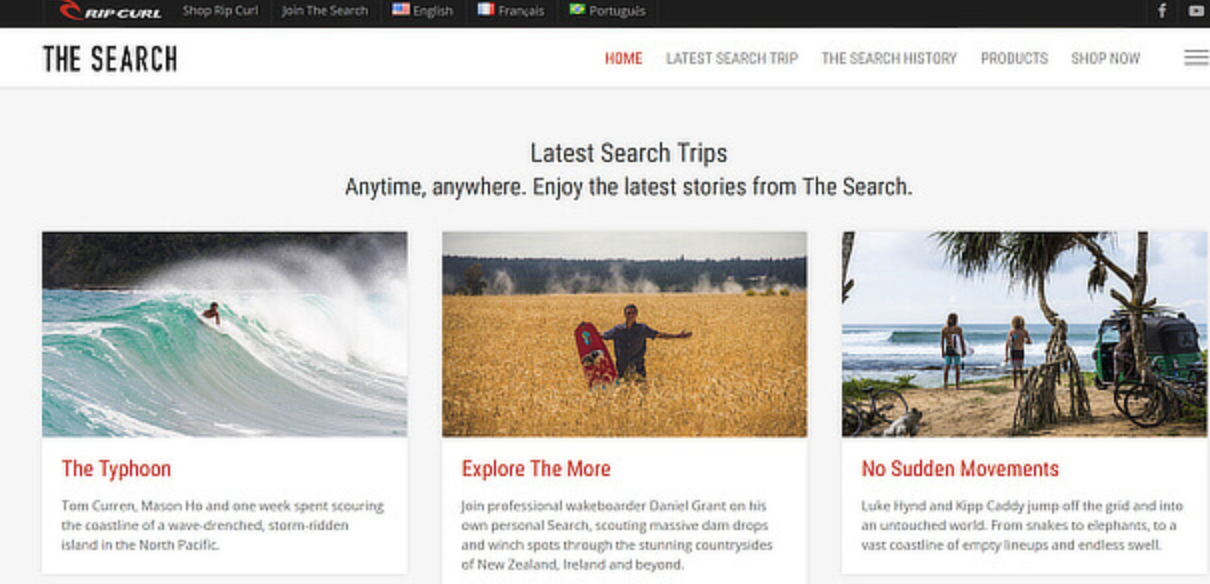You’re crouched down and poised. Just waiting for the loud bang to sound until your legs are allowed to start moving.
BANG.
You spring into action. Legs and arms pumping as your heart rate goes through the roof.
You’re making headway, ahead of the other sprinters.
But then you suddenly (for no reason whatsoever) veer off course, running as fast as you can past the bleachers and zig-zag out of the stadium.
Ridiculous, right?
You would never do that. As a runner, you have a clear objective to meet: winning the race. And to do that you need to stay on the track and run as fast as your legs can carry you.
Content marketing is no different.
You need an objective (or three) to stop you from zig-zagging around all over the place and veering off into oblivion.
Too many brands just throw out content without having a goal. A concrete idea of what they’re working towards when they’re producing content.
I’m going to take you through 3 content marketing objectives and tell you exactly how to hit ‘em (and why).
Let’s go.
But first, what exactly is content marketing?
According to the Content Marketing Institute, content marketing is:
“A strategic marketing approach focused on creating and distributing valuable, relevant, and consistent content to attract and retain a clearly defined audience — and, ultimately, to drive profitable customer action.”
Content marketing is different for every brand. What works for one, may not work for yours.
But there are common objectives that all content marketing simply has to nail to be successful.
First up…
BRAND AWARENESS AND BUILDING
It’s stiff competition out there. As a result, content can simply just be noise.
And when someone reads your content you want them to think ‘wow, who wrote this?’
Essentially, you want them to be aware of your brand through the awesome content you send their way… and want more of it.
First and foremost, you need to consistently create high-quality content that speaks directly to your audience’s pain points. This will position your brand as a helpful, super knowledgeable expert in that area.
Be consistent.
There’s no point in just chucking out random pieces of content. A blog post here, whitepaper there and an ebook four months later aren’t going to stick in people’s minds.
You need to have a consistent strategy for creating value-driven content.
Here’s the gist:
- Always keep a content list on the go and plan ahead. Content ideas spring into our minds all the time. A conversation with a customer may spark your next video, for example.
- Repurpose your content. When you create content think about ways you can repurpose it. An ebook could be chopped up into blog posts. Or you could create a webinar from a whitepaper. The possibilities are endless and not only do you expand your reach, but you can get true mileage out of your content. Take a look at this handy post from Audience Ops for even more inspiration on consistency.
- Be valuable. Offering real value to your audience is going to make or break their interest in your brand. Great content should solve problems for your audience, showing them that you’re an authority in the industry.
Always have an ear on the ground to what your audience is saying and what problems they’re facing. You can do this by social listening, buyer insights, surveys, focus groups etc.
That way you can craft content that will speak to them in a tangible, valuable way.
Take a peek at this post from Forrester for a ton of useful information on carrying out buyer interviews and gleaning those all-important insights.
Remember, your content needs to mirror your values, knowledge and personality. It needs to be relatable to the audience and showcase who your brand is.
That’s how you get the ‘sticky’ factor through your content marketing.
GENERATING THE HOLY GRAIL: LEADS
Let’s not be coy about the fact that we’re in this content game for the leads.
Of course we are.
You want to get those readers into your content marketing funnel and push them along in an effective way.
Setting up a content marketing funnel is the key objective here because it focuses on ‘warming up’ the reader to the point of them being ready for the sale.
Here’s the funnel in all its glory:
In summary:
At the top of the funnel you want to pique their interest and draw them in with eye-catching content that solves direct problems.
Content examples include:
- Blog posts
- Social media posts
- Whitepapers
- Checklists
- How-to videos
- Ebooks
- Webinars
In the middle of the funnel, you nurture these leads further and make them aware of your brand’s authority and expertise with value-driven content.
Content examples include:
- All the content types that you would use at the top of the funnel
- Product comparison guides
- Case studies
- Free samples
The bottom of the funnel is your chance to ask for the sale. In theory, they will be warm enough by now to trust you and see the true value in your offering.
Content types include:
- Sales emails
- Free trial or demo
- Landing pages geared up with conversion copy
- Your website itself
This is a BIG topic to cover in itself and this value-packed post by Hubspot takes you through it step by step.
This leads us nicely on to our next objective…
IMPROVING ORGANIC SEARCH VISIBILITY
Google receives over 3.5 billion searches per day. That’s around 80,000 per second.
That’s why it’s crucial for content to include keywords if you want it to stand a chance of being visible.
Using tools like Google’s very own Keyword Planner will help you to identify the keywords and phrases that your audience is searching for.
But be careful, poor keyword usage can actually damage your ranking in Google.
Avoid keyword stuffing like the plague. If you’ve got keywords in every other sentence Google isn’t going to thank you for it.
It’s also pretty hard on the eyes to read content stuffed with keywords.
Here are the two golden rules:
- Use the keyword in the title of your content.
- Use your main keyword in the first couple of sentences of your content. Or at the very least, in the first paragraph.
- Next, use variations of your keyword throughout your content.
But remember, the bottom line is to write for human beings first, not for Google. You want your content to be relatable and above everything else you want it to be understandable.
Now, let’s get to the really good stuff and take a peek at some shining content marketing examples.
Ready?
First up, we have…
Rip Curl is a brand that knows how to speak to its customers and satisfy their needs.
They brand themselves as the “ultimate surfing company”. And so they created an online publication aptly named The Search.
The Search publishes surfers’ journeys for the most exciting waves, surfers’ stories and experiences. But it also has amazing photography and it’s simply a gripping resource for those who love to surf.
And the stats go on to prove this. It has over 100,000 YouTube subscribers and over 2 million Facebook followers.
Shutterstock, being in the business of images, decided to approach content in a different way and produce a trends report.
It’s interactive (with videos and music), widely shared and has attracted more than 6 million site visits. And it’s used their expertise to make a resource that everyone can use: a creative trends report. This capitalizes on the fact that people love reliable data, and this type of resource gets widely shared.
Last year’s infographic drew in thousands of social shares and attracted more than 6 billion site visits.
To date, it’s been shared over 10,000 times.
Impressive, right?
Above all, their content is on-brand, colourful, and incredibly useful and shareable.
Win-win.
FINAL THOUGHTS
Whatever your content marketing objectives are, you need to stay on track.
You want to raise brand awareness? Great, be in their faces consistently with value-driven content that’s suitable for your brand.
You want to drive conversions and leads? Sure, but get your marketing funnel in full working order to nurture those relationships.
Keep focused.
Make your content work for you.
And don’t veer off the racecourse.
Love,
Ella



Hi, find the information really helpful.
Great post!
Gee, thanks!
Great post! I totally agree that it’s important to stay focused on your content marketing objectives in order to be successful. It can be easy to get sidetracked or lose sight of your goals, but having a clear plan and staying committed to it can make all the difference. Your tips for staying focused are spot on, especially the suggestion to imroving organic search visibility. Thanks for sharing!
Indeed! Thanks for reading our blog! Cheers 🙂
It’s a great read. Thanks for sharing such a mindful & researched guide with us.
NJ Graphica
Always a pleasure!